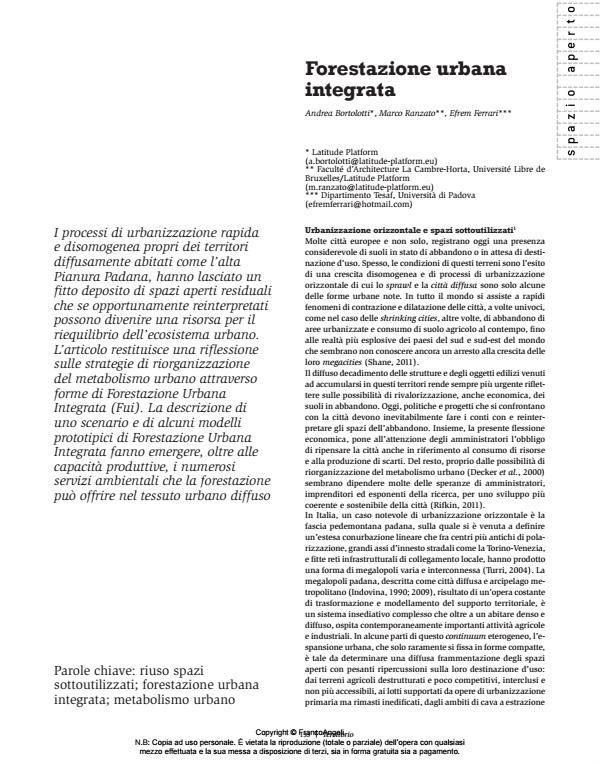Integrated urban forestation
Journal title TERRITORIO
Author/s Andrea Bortolotti, Marco Ranzato, Efrem Ferrari
Publishing Year 2014 Issue 2013/67
Language Italian Pages 9 P. 133-141 File size 2437 KB
DOI 10.3280/TR2013-067022
DOI is like a bar code for intellectual property: to have more infomation
click here
Below, you can see the article first page
If you want to buy this article in PDF format, you can do it, following the instructions to buy download credits

FrancoAngeli is member of Publishers International Linking Association, Inc (PILA), a not-for-profit association which run the CrossRef service enabling links to and from online scholarly content.
The processes of rapid and uneven urbanisation found in the diffusely inhabited areas of the Upper Po Plain have left a dense deposit of residual outdoor spaces, which if reinterpreted appropriately could become a resource to restore balance to the urban ecosystem. The paper discusses strategies for the reorganisation of urban metabolism by means of forms of integrated urban forestation (Fui). The description of a scenario and of some prototype models of integrated urban forestation highlights not only the production capacities but also the numerous environmental services which forestation can offer in a diffuse urban area.
Keywords: Reuse of underused spaces; integrated urban forestation; urban metabolism
Andrea Bortolotti, Marco Ranzato, Efrem Ferrari, Forestazione urbana integrata in "TERRITORIO" 67/2013, pp 133-141, DOI: 10.3280/TR2013-067022